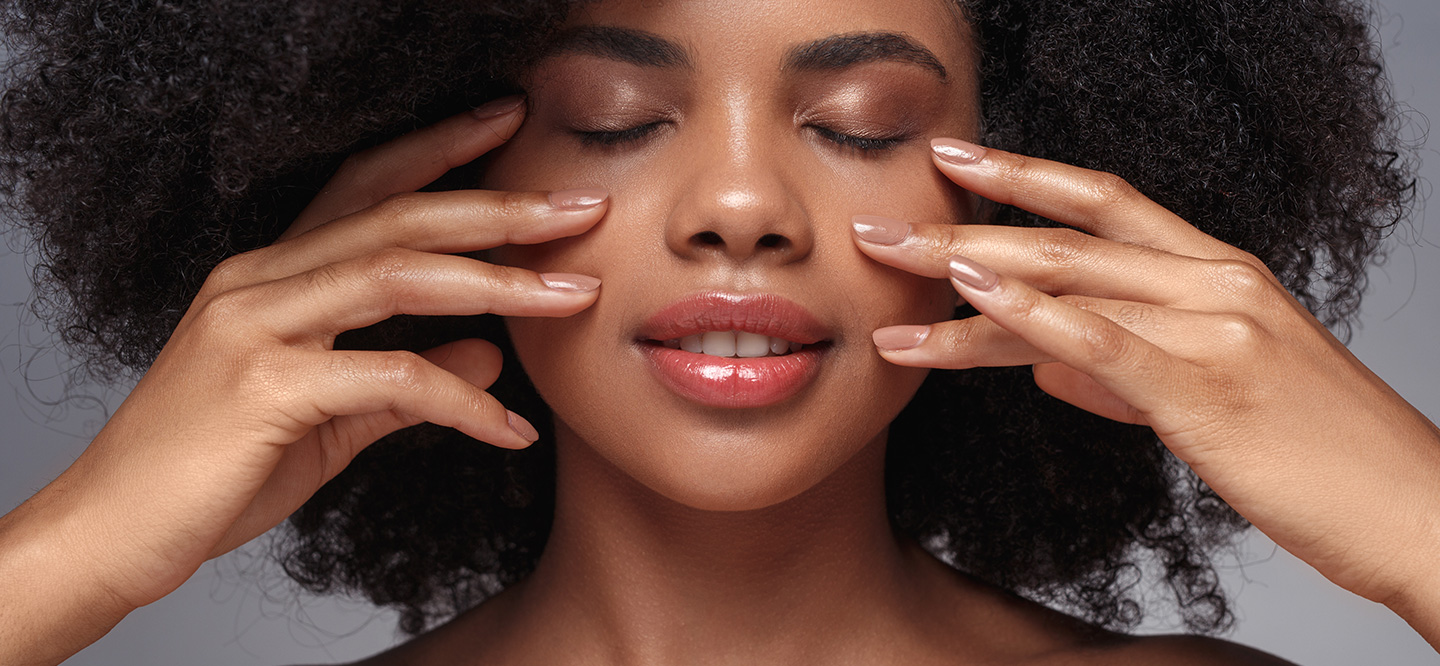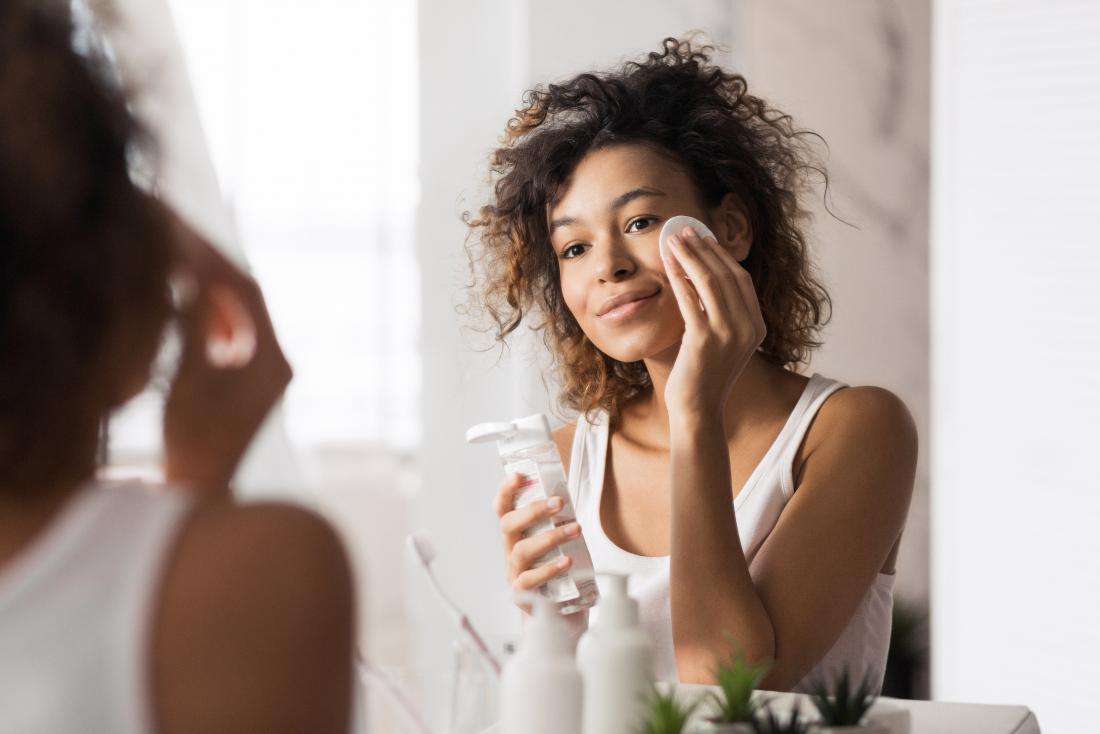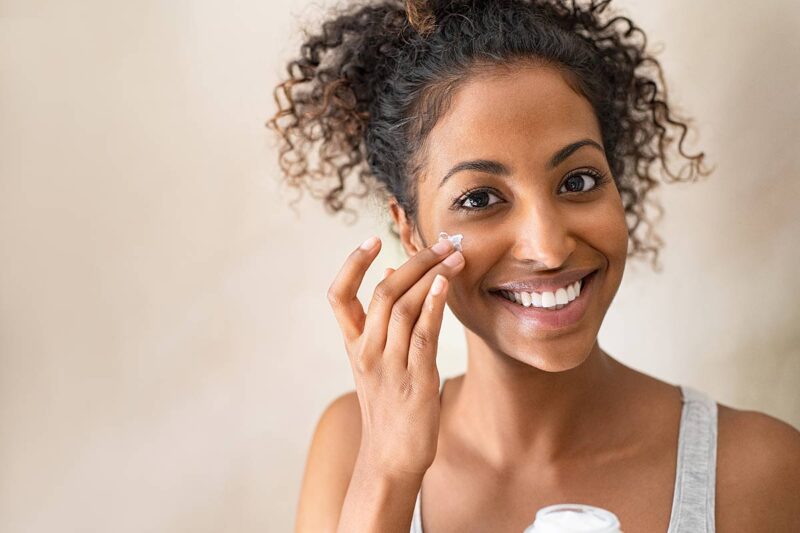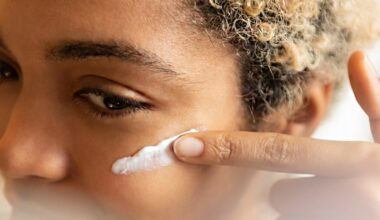Taking care of your skin is essential, especially for people with darker skin tones. Dark skin is more prone to specific issues such as hyperpigmentation, dark circles, and eczema. To keep your skin healthy and glowing, you need to have a skincare routine that caters to your skin type and addresses these issues. In this comprehensive guide, we’ll take you through the steps to building a skincare routine for dark skin that will keep your skin healthy, radiant, and protected.
Understanding Your Skin Type

Before diving into building your skincare routine, it’s essential to understand your skin type. Different skin types require different products and regimens. There are four main skin types: oily, dry, combination, and sensitive.
- Oily Skin: This type of skin produces excess sebum, which can lead to clogged pores and acne.
- Dry Skin: This skin type lacks moisture, making it prone to flakiness, itching, and cracking.
- Combination Skin: This type of skin has a mix of oily and dry areas.
- Sensitive Skin: This skin type is easily irritated and can be prone to redness, itchiness, and dryness.
Knowing your skin type will help you choose products that cater to your specific needs.
Common Skin Issues For Dark Skin
Dark skin has specific problems that need to be addressed. Hyperpigmentation, dark circles, and eczema are the most common issues. Hyperpigmentation refers to darkening of the skin due to increased melanin production. Dark circles are the result of blood vessels under the eyes that become visible due to thin skin. Eczema is a skin condition characterized by inflamed and itchy skin.
Building Your Skincare Routine
A good skincare routine has the following products to maximize and maintain the health of your skin:
Step 1: Cleanser

Cleansing is the first step in any skincare routine. Your skin is exposed to pollution and other environmental factors throughout the day. Cleansing helps to remove dirt, oil, and makeup that can clog your pores. There are different types of cleansers for different skin types.
- Oily Skin: Look for foaming or gel cleansers that can help to remove excess oil.
- Dry Skin: Look for cream or oil-based cleansers that can add moisture to your skin.
- Combination Skin: Look for a gentle cleanser that can balance the oil production in your skin.
- Sensitive Skin: Look for a fragrance-free and gentle cleanser that won’t irritate your skin.
Step 2: Exfoliant
Exfoliating helps to remove dead skin cells and reveal brighter, smoother skin. There are two types of exfoliants: physical and chemical.
- Physical Exfoliants: These use abrasive ingredients to remove dead skin cells. Look for gentler options like rice powder or jojoba beads, which can be less harsh on the skin.
- Chemical Exfoliants: These use chemicals like alpha-hydroxy acids (AHAs) and beta-hydroxy acids (BHAs) to dissolve dead skin cells. They can be more effective than physical exfoliants, but it’s essential to follow the instructions and not overdo it.
Step 3: Toner
Toning helps to balance the pH level of your skin and can help to remove any remaining dirt or makeup. Look for toners that cater to your specific skin type and concerns.
- Oily Skin: Look for toners with salicylic acid, which can help to unclog pores.
- Dry Skin: Look for toners with hydrating ingredients like hyaluronic acid, which can add moisture to your skin.
- Combination Skin: Look for toners that can balance your skin’s oil production.
- Sensitive Skin: Look for toners that are alcohol-free and fragrance-free.
Step 4: Treatments
Treatments are products that target specific skin concerns. They can be serums, masks, or creams. Look for treatments that cater to your specific skin concerns.
- Hyperpigmentation: Look for products with ingredients like vitamin C, niacinamide, or azelaic acid, which can help to even out your skin tone.
- Dark Circles: Look for products with caffeine or vitamin K, which can help to reduce puffiness and dark circles.
- Eczema: Look for products with ingredients like colloidal oatmeal or ceramides, which can help to soothe and hydrate your skin.
Step 5: Eye Cream
The skin around your eyes is delicate and requires special care. Look for eye creams that cater to your specific concerns.
- Dark Circles: Look for eye creams with caffeine or vitamin K, which can help to reduce puffiness and dark circles.
- Fine Lines and Wrinkles: Look for eye creams with retinol, which can help to reduce the appearance of fine lines and wrinkles.
Step 6: Moisturizer

Moisturizing is essential for keeping your skin hydrated and healthy. Look for moisturizers that cater to your specific skin type.
- Oily Skin: Look for oil-free or gel-based moisturizers that can help to hydrate your skin without adding excess oil.
- Dry Skin: Look for cream-based moisturizers with hydrating ingredients like hyaluronic acid or ceramides.
- Combination Skin: Look for lightweight moisturizers that can balance your skin’s oil production.
- Sensitive Skin: Look for fragrance-free and gentle moisturizers that won’t irritate your skin.
Step 7: Sunscreen
Sunscreen is essential for protecting your skin from the harmful effects of the sun. Look for sunscreens with an SPF of at least 30 and broad-spectrum protection.
Daytime Skincare Routine
Your daytime skincare routine should focus on protecting your skin from the sun and daily pollution while keeping it hydrated.
- Cleanser: Use a gentle cleanser to remove any dirt or oil from your skin.
- Toner: If using, apply toner to balance your skin’s pH level.
- Treatment: Apply any treatment products that cater to your specific skin concerns.
- Eye Cream: If using, apply eye cream to the delicate skin around your eyes.
- Moisturizer: Apply moisturizer to keep your skin hydrated.
- Sunscreen: Apply sunscreen with an SPF of at least 30 to protect your skin from the sun.
Nighttime Skincare Routine
Your nighttime skincare routine should focus on repairing and rejuvenating your skin.
- Cleanser: Use a gentle cleanser to remove any dirt or oil from your skin.
- Exfoliant: If using, apply a gentle exfoliant to remove dead skin cells.
- Toner: If using, apply toner to balance your skin’s pH level.
- Treatment: Apply any treatment products that cater to your specific skin concerns.
- Eye Cream: If using, apply eye cream to the delicate skin around your eyes.
- Moisturizer: Apply moisturizer to keep your skin hydrated and repair any damage.
- Additional Treatment: If using, apply any additional treatment products like retinol to promote skin cell turnover.
Importance Of Sunscreen
Sunscreen is essential for protecting your skin from the harmful effects of the sun. It can help to prevent sunburn, skin cancer, and premature aging. Even if you have darker skin, you still need to wear sunscreen daily to protect your skin from UV rays and blue light.
Conclusion
Building a skincare routine for dark skin takes time and effort, but it’s worth it to keep your skin healthy and glowing. Remember to listen to your skin and adjust your routine as needed. Don’t forget to wear sunscreen every day, and if you have any serious skin concerns, consult with a dermatologist or skincare professional. With the right products and routine, you can achieve healthy, radiant skin.






